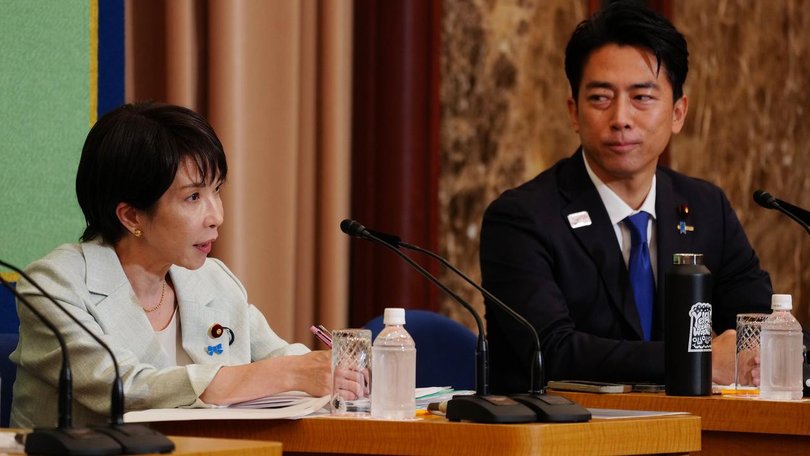Japan's ruling Liberal Democratic Party leadership race down to two rivals

A vote to determine Japan’s likely next prime minister is heading to a runoff, with the ruling party picking between its first female leader and the youngest of the modern era.
The Liberal Democratic Party will select either hardline nationalist Sanae Takaichi, 64, or the telegenic political scion Shinjiro Koizumi, 44, to regain trust from a public angered by rising prices and drawn to opposition groups promising big stimulus and clampdowns on foreigners.
A vote in parliament to choose a prime minister to replace Shigeru Ishiba is expected to be held on October 15.
Sign up to The Nightly's newsletters.
Get the first look at the digital newspaper, curated daily stories and breaking headlines delivered to your inbox.
By continuing you agree to our Terms and Privacy Policy.The new LDP president is likely to succeed Ishiba as leader of the world’s fourth-biggest economy because the party, which has governed Japan for almost all the postwar period, is the biggest in parliament. But this is not assured as the party and its coalition partner lost their majorities in both houses under Ishiba in the past year.
Various other parties, including the fiscally expansionist Democratic Party for the People and the anti-immigration Sanseito have been steadily luring, especially younger voters, away from the LDP.
Takaichi, the only woman in the race, offers the starkest vision for change, and potentially the most disruptive.
An advocate of late premier Shinzo Abe’s “Abenomics” strategy to jolt the economy with aggressive spending and easy monetary policy, she has previously criticised the Bank of Japan’s interest rate increases.
Such a policy shift could spook investors worried about one of the world’s biggest debt loads.
Farm Minister Koizumi promises to boost wages and provide relief to households struggling with inflation - but within the fiscal restraints set by Ishiba and other recent administrations.
Takaichi has also raised the possibility of redoing an investment deal with US President Donald Trump that lowered his punishing tariffs in return for Japanese taxpayer-backed investment. Koizumi has defended the deal.
Her nationalistic positions - such as her regular visits to the Yasukuni shrine to Japan’s war dead, viewed by some Asian neighbours as a symbol of its past militarism - may rile South Korea and China.
Polling suggests Koizumi has stronger backing in the parliamentary party, giving him an advantage, though Takaichi is more favoured by rank-and-file members.
